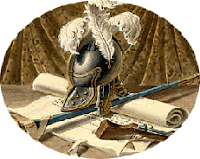
The
USS Constellation Museum, located in Baltimore, Maryland, is pleased to offer, to qualified candidates, the opportunity to apply for a position on the Ship's Crew with a rating of Boatswain's Mate. An intermediate position of seniority within Constellation's Ship's Crew, the Boatswain's Mate reports directly to the Museum Interpretation Coordinator and works with other crew members and the general public who visit the USS Constellation Museum. Being an effective co-worker, possessing a positive work ethic, and employing superior communication skills are traits essential for this position.
A Boatswain's mate assists with and supervises the completion of daily clean-up and preventive maintenance in the museum and on board the ship; assisting with and supervises special events, day programs, and overnight activities; learns and provides public presentations, tours, day programs, and overnight activities. A Boatswain's mate works closely with Ship's Crew members to develop their ability to learn and deliver presentations and to become more effective museum employees. A Boatswain's mate maintains and, while on duty, wears a Civil War era naval enlisted uniform.
Applicants must be at least 21 years of age, have graduated from an accredited high school or received a GED equivalent, have completed at least one full year of college, and be available up to 40 hours per week.
Job Description: The USS Constellation Museum is the steward of USS Constellation, the only surviving Civil War era naval vessel and the last sailing warship built by the United States Navy. (abridged).
The Boatswain's Mate position is a challenging position and an intermediate-level position in the museum's interpretive staff, Ship's Crew. Duties include, but are not limited to, providing frequent public presentations in a variety of programs aboard ship about subjects associated with USS Constellation and her century of service; representing the Museum, both on board and off-site as a docent and spokesperson for museum interpretive and education programs; and as directed, overseeing certain aspects relative to Ship's Crew, including its conduct, performance, appearance, and welfare during normal hours of operation, special and catered events. Among these oversights are ensuring high standards of staff conduct and proficiency, complying with and occasionally writing the daily plans, and cleaning and securing the ship and museum building. Overall, premiums are placed on the Boatswain's Mate's verbal and written communication skills, leadership ability, cooperative spirit, and can-do attitude.
Direct responsibilities include, but may not be limited to:
· Carrying out all Museum policies and the directives of the Director of Museum Interpretation and Education, the Interpretation Coordinator, the Education Coordinator, and the crew supervisors
· Learning and providing presentations and tours associated with interpretive, education, and overnight programs
· Learning and implementing the Museum programs by developing a thorough knowledge of USS Constellation and associated information to include:
~ Developing and maintaining a working familiarization of related nautical and naval historical subjects
~ Mastering all presentations and tours
~ Maintaining and wearing while on duty a Civil War era sailor's uniform
~ Answering visitor questions and the questions of junior interpretive staff
· Assisting with and sometimes supervising the opening and closing routines and catered and special event crews
Coordinated Responsibilities include, but may not be limited to:
· Working with the Director of Special Events before, during, and after catered and special events to ensure that the needs of the client and museum are met
· Working with and sometimes supervising staff and programs in both the interpretive and education departments
· Working with and supervising Crew Members who work with the Ship's Manager as directed
· Working with the Education Coordinator in preparing for, conducting, and post-event activities relative to shipboard day programs, off-site programs, and overnight programs
General Responsibilities include, but may not be limited to:
Practicing safe and efficient work habits realizing that you are a role model for ship's staff, apprentices, interns, volunteers, and the visiting public
Being an effective leader who promotes and reflects a positive work ethic and good morale among ship's staff, apprentices, interns, and volunteers
Being an effective spokesperson for the USS Constellation Museum, the National Historic Seaport of Baltimore, and the Living classrooms Foundation
Such other duties as assigned by the Director of Museum Interpretation and Education or the Interpretation Coordinator
Salary: $10 an hour with 10% raise after 6 months
Benefits: Worker's Compensation
Full medical after six months
Please send resume and cover letter to:
Director of Museum Interpretation and Education
The USS Constellation Museum
Pier 1, 301 East Pratt Street
Baltimore, Maryland 21202-3134
Alternately, you may e-mail your information to: sberry@constellation.org and put Boatswain's Mate Search in the subject line. Complete job description and salary/benefit information available upon request. The USS Constellation Museum is an equal opportunity employer.



























